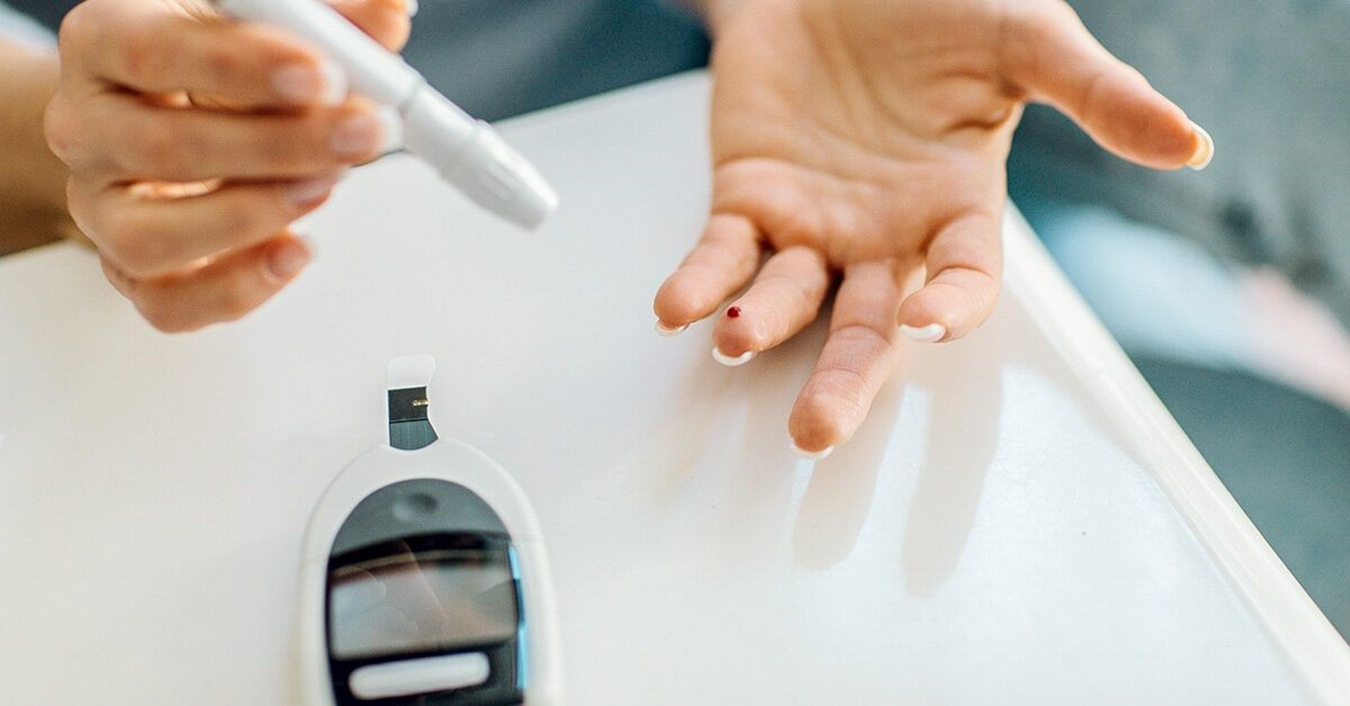An overweight young adult diagnosed with type 2 diabetes mellitus is admitted for a hernia repair.
The patient reports feeling very weak and jittery.
What actions should the nurse take? (Select all that apply)
Check fingerstick glucose level.
Assess skin temperature and moisture.
Administer a PRN dose of regular insulin.
Document anxiety on the surgical checklist.
Measure pulse and blood pressure.
Correct Answer : A,B,E
Choice A rationale
Checking the fingerstick glucose level is an immediate action that the nurse should take when a patient with type 2 diabetes reports feeling weak and jittery. These symptoms could indicate hypoglycemia, a condition characterized by low blood sugar levels.
Choice B rationale
Assessing skin temperature and moisture can help the nurse determine if the patient is sweating, a common symptom of hypoglycemia.
Choice C rationale
Administering a PRN dose of regular insulin is not the appropriate action if the patient is experiencing symptoms of hypoglycemia. Insulin would further lower the patient’s blood sugar levels, potentially worsening their condition.
Choice D rationale
Documenting anxiety on the surgical checklist may not be immediately helpful in addressing the patient’s current symptoms. While it’s important to document all relevant information, the nurse’s immediate focus should be on assessing and managing the patient’s symptoms.
Choice E rationale
Measuring pulse and blood pressure can provide important information about the patient’s cardiovascular status. Hypoglycemia can cause tachycardia and potentially hypotension, so these vital signs should be monitored.

Nursing Test Bank
Naxlex Comprehensive Predictor Exams
Related Questions
Correct Answer is C
Explanation
Choice A rationale
A CT scan of the chest can be performed to detect the severity of infection in pneumonia. However, it is not typically the first diagnostic test prescribed. It is usually recommended if the pneumonia isn’t clearing as quickly as expected.
Choice B rationale
Arterial blood gases (ABG) can be used to measure the oxygen level in your blood. Pneumonia can prevent your lungs from moving enough oxygen into your bloodstream. However, ABG is not typically the first diagnostic test prescribed for pneumonia.
Choice C rationale
A sputum culture test is often used to confirm the cause of infection in pneumonia. This test involves taking a sample of fluid from your lungs (sputum) after a deep cough and analyzing it to help pinpoint the cause of the infection.
Choice D rationale
Blood cultures can identify the germ causing your pneumonia and also show whether a bacterial infection has spread to your blood. However, they are not typically the first diagnostic test prescribed for pneumonia.
Correct Answer is A
Explanation
Choice A rationale
As with, a lumbar puncture is the primary diagnostic procedure for suspected bacterial meningitis. The other choices, while useful for detecting other conditions, are not as definitive for diagnosing bacterial meningitis.
Choice B rationale
As mentioned in the rationale for, Choice B, skull radiography is not typically used to diagnose bacterial meningitis.
Choice C rationale
As mentioned in the rationale for, Choice C, an MRI can provide detailed images of the brain and surrounding tissues, but it is not the primary tool for diagnosing bacterial meningitis.
Choice D rationale
As mentioned in the rationale for, Choice D, a CT scan can detect abnormalities in the brain, but it cannot definitively diagnose bacterial meningitis.
Whether you are a student looking to ace your exams or a practicing nurse seeking to enhance your expertise , our nursing education contents will empower you with the confidence and competence to make a difference in the lives of patients and become a respected leader in the healthcare field.
Visit Naxlex, invest in your future and unlock endless possibilities with our unparalleled nursing education contents today
Report Wrong Answer on the Current Question
Do you disagree with the answer? If yes, what is your expected answer? Explain.
Kindly be descriptive with the issue you are facing.
